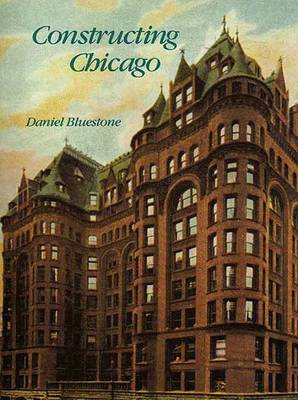Chicago's impressive industrial expansion in the late 19th-century convinced most observers that the city was defined by the crass pursuit of wealth and that its architecture was, as described by Lewis Mumford, "a brutal network of industrial necessities." In this book, Daniel Bluestone disputes this vision of the city. Combining architectural history and cultural analysis, Bluestone explores the creation of Chicago's parks, churches, skyscrapers, and civic buildings. He finds that the structure of the city was influenced as much by the moral, cultural, and aesthetic aspirations of its local elite as by the untempered forces of commerce and capital. Bluestone shows how 19th-century Chicago architects and their clients attempted to create a distinctive landscape that could distract residents and visitors from the gritty commercial workings of the city while demonstrating a commitment to urbanism that went beyond the marketplace.
He surveys the parks that were created to mediate relations between social classes; the churches relocated in residential areas so that they could avoid the dominance of new downtown buildings; the plans for lake-front civic centres architectually distinguished from the forms of the city's famous early skyscrapers - the Rookery, the Manadnock, the Columbus Memorial, and the Masonic Temple. And he examines these early Chicago skyscrapers, noting how their monumental entrances, embellished lobbies, artistic elevators, and spacious light courts were designed to soften their commercial edges, to recast the city's image, and to cultivate an emerging class of white-collar workers.
- ISBN10 0300048483
- ISBN13 9780300048483
- Publish Date 23 October 1991
- Publish Status Out of Print
- Out of Print 22 September 2006
- Publish Country US
- Imprint Yale University Press
- Format Hardcover
- Pages 288
- Language English
